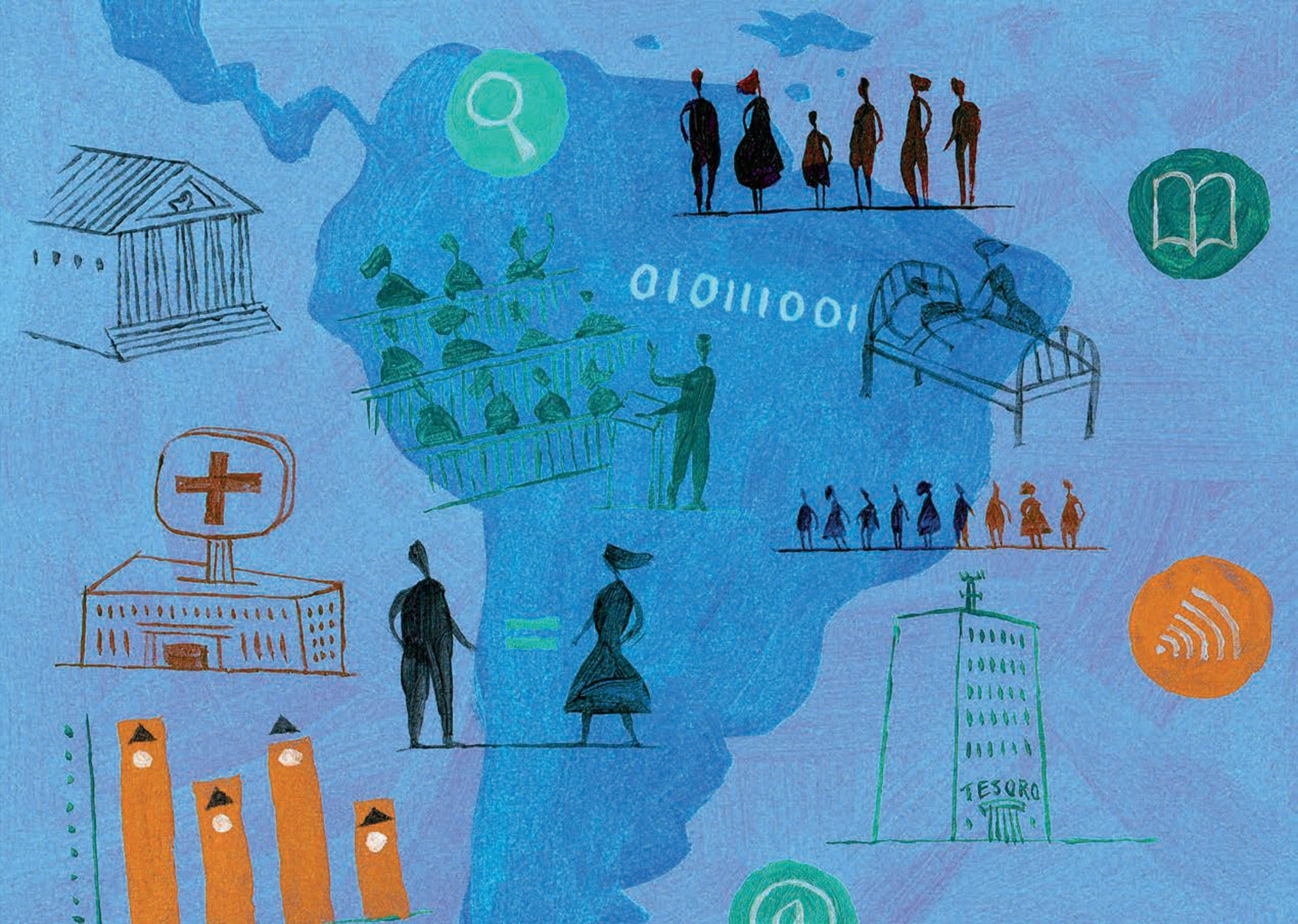This third edition of Government at a Glance Latin America and the Caribbean provides the latest available evidence on public administrations and their performance in the LAC region and compares it to OECD countries. This publication includes indicators on public finances and economics, public employment, centres of government, regulatory governance, open government data, public sector integrity, public procurement and for the first time core government results (e.g. trust, inequality reduction). Governance indicators are especially useful for monitoring and benchmarking governments' progress in their public sector reforms. Each indicator in the publication is presented in a user-friendly format, consisting of graphs and/or charts illustrating variations across countries and over time, brief descriptive analyses highlighting the major findings of the data, and a methodological section on the definition of the indicator and any limitations in data comparability.
Government at a Glance: Latin America and the Caribbean 2020

Abstract
Executive Summary
Latin American and Caribbean countries continue to face challenges in designing and enforcing public policies that promote good governance and inclusive societies. Along with difficult economic conditions, such setbacks to previous progress have spurred declining levels of trust in public institutions. In order to sustain inclusive growth, Latin American and Caribbean countries need to continue implementing public sector reforms that promote fairness for all.
Government at a Glance 2020: Latin America and the Caribbean presents internationally comparable indicators of public governance practices and reforms, showing how these reforms are implemented and what results they achieve. The indicators allow the benchmarking of best practices in the LAC region and against OECD countries and indicate areas that need attention and improvement if countries are to achieve outcomes such as increased trust in government.
Key findings
LAC countries made significant improvements in public welfare in the past two decades, but these achievements are in jeopardy and trust in government has declined.
As of 2018, 34% of the population in the LAC region reported having trust in government, 4 percentage points lower than in 2007.
Income inequality (measured by the GINI coefficient) has decreased in most LAC countries in the period 2000-2017. However, in 2017 income inequality was still higher in all Latin American and Caribbean countries than in the five most unequal OECD countries.
Confidence in the judiciary is low but increased from 31% to 34% in LAC countries on average between 2007 and 2017.
Citizens’ satisfaction with health care and education decreased from 55% to 49% and from 65% to 63%, on average, respectively. There have been sharp declines in some countries (e.g. satisfaction with education in Uruguay decreased by 12 percentage points, and in Brazil, Chile and Colombia by 7 percentage points).
The economic and fiscal outlooks in LAC countries have deteriorated due to sluggish economic growth; while public spending choices may not enhance inclusive growth.
In 2018, LAC countries reported an average deficit of 4.3% of GDP, 3.4 percentage points higher than in 2007.
Gross debt reached 65% of GDP in 2018 in LAC countries, an increase of 17.2 percentage points since 2007, reducing countries’ room for manoeuvre.
While the region needs substantial investment in infrastructure, public investment represented only 1.6% of GDP in Latin American and Caribbean countries in 2017, around half of what has been invested, on average, in OECD countries (3.1%) and 0.7 percentage points lower than in 2007.
LAC countries spend proportionately less than OECD countries on social benefits, such as pensions and conditional cash transfers (30% of government expenditures compared to 41% in the OECD countries in 2017), and more on grants and other expenses, such as capital and current transfers to other actors of the economy (10% in the region compared to 6% in the OECD).
Many LAC countries have frameworks to promote accountability, transparency and integrity in public decision-making, but their implementation varies greatly.
To address undue influence in elections, most LAC countries forbid anonymous political donations; however, 92 % of surveyed countries allow cash contributions, which make it difficult to track the sources of funds. Parties or candidates are allowed to give gifts to voters in 25% of the countries.
Eight of the twelve surveyed LAC countries have mechanisms for merit-based recruitment, such as competitive entrance examinations for the civil service. Yet, a significant proportion of non-permanent staff in the public service workforce is not subject to such procedures (e.g. 57% of the civil service in Chile, 40% in Peru and 34% in Argentina in 2018).
In 2019, all 10 surveyed LAC countries have a requirement to consult stakeholders during the development of some subordinate regulations. However, in practice, only three of them engage stakeholders systematically during the regulatory process.
The OECD Open, Useful and Re-usable data (OURdata) Index measures government data availability, accessibility and government support for its re-use. On average, LAC countries scored 0.43 compared to an OECD average of 0.60 in 2018, with Colombia (0.88), Mexico (0.71), Brazil (0.63) and Uruguay (0.62) having higher scores than the OECD average.
Stronger policy co-ordination, public management and institutional capacity would enhance the efficacy of public policies and help regain citizens’ trust.
The centres of government (CoGs) – which support the cabinet of ministers and the head of state – in Latin American and Caribbean countries have a weak role in strategic planning: the majority of CoGs in OECD countries co-ordinate the design and implementation of strategic priorities, but only half of CoGs of Latin America and Caribbean countries do so.
Several LAC countries have fiscal rules to improve the predictability of public finances. Ten out of thirteen surveyed countries have established expenditure ceilings or levels, and seven have debt ceilings or reduction targets. Yet, eight of the 13 surveyed countries have resorted to complementary budgets every year between 2010 and 2017, which may reflect poor planning or financial control.
The public sector workforce is smaller in Latin America and Caribbean countries than across the OECD (12% of total employment in 2018 in LAC and 21% in the OECD). Women represent 51% of the public sector workforce in Latin America and Caribbean, and 60.2% among OECD countries. However, only 27.4% of ministers in LAC countries were women in 2019, compared to 31.2% in OECD countries.
Public procurement in LAC countries accounts for, on average, 6% of GDP. Most LAC countries have policies and strategies to use public procurement to achieve complementary policy objectives, such as supporting SMEs. Yet, only two-thirds have electronic government procurement systems, which promote transparency, fairness and efficiency, whereas all OECD countries have them.
In the same series
Related publications
-
 20 November 2024
20 November 2024 -
 20 November 2024
20 November 2024 -
 19 November 2024
19 November 2024 -
 19 November 2024
19 November 2024 -
 18 November 2024
18 November 2024 -
 15 November 2024
15 November 2024



